LSDH Publication Highlights
Timing and intraindividual variability of daytime napping and Alzheimer’s disease in older adults

In this study, we leveraged longitudinal actigraphy and neuropathological data from the Rush Memory and Aging Project to examine how when and how consistently older adults nap during the day are linked to their risk for Alzheimer’s disease (AD). We found that morning naps (9–11 AM) were associated with increased risk of Alzheimer’s dementia; early afternoon naps (1–3 PM) were linked to lower amyloid-β burden, a key AD pathology; and greater day-to-day variability in nap duration was associated with increased levels of amyloid-β and tau tangles at death. These results support a multi-dimensional sleep health framework and highlight that nap timing and regularity--not just duration--may be critical behavioral signals for brain aging.
C Gao, X Zheng, R Cai, L Yu, JA Schneider, AS Buchman, DA Bennett, Y Leng, A Ibanez, L Gao, K Hu, P Li
Communications Medicine
Reduced Complexity of Pulse Rate Is Associated With Faster Cognitive Decline in Older Adults

In this large longitudinal study of over 500 community-dwelling older adults, our team examined whether the complexity of pulse rate -- measured using a novel nonlinear approach called distribution entropy -- is linked to cognitive decline. We found that lower pulse rate complexity, potentially reflecting dysregulated cardiac autonomic function, was significantly associated with faster decline in global cognitive performance over time. Notably, this nonlinear measure outperformed conventional heart rate variability metrics in predicting cognitive changes. These findings highlight the promise of digital health tools and wearable sensors in identifying early risk markers for dementia and other neurodegenerative diseases.
C Gao, A Lim, S Haghayegh, R Cai, J Yang, L Yu, A Ibanez, AS Buchman, DA Bennett, L Gao, K Hu, P Li
Journal of the American Heart Association
RESEARCH ARTICLE | May 7, 2025
NEUROSCIENCE NEWS | Heart’s Rhythm May Help Forecast Cognitive Longevity
TODAY HEADLINE | Heart Rhythm Complexity Predicts Cognitive Decline in Older Adults
Circadian disturbances and frailty risk in older adults
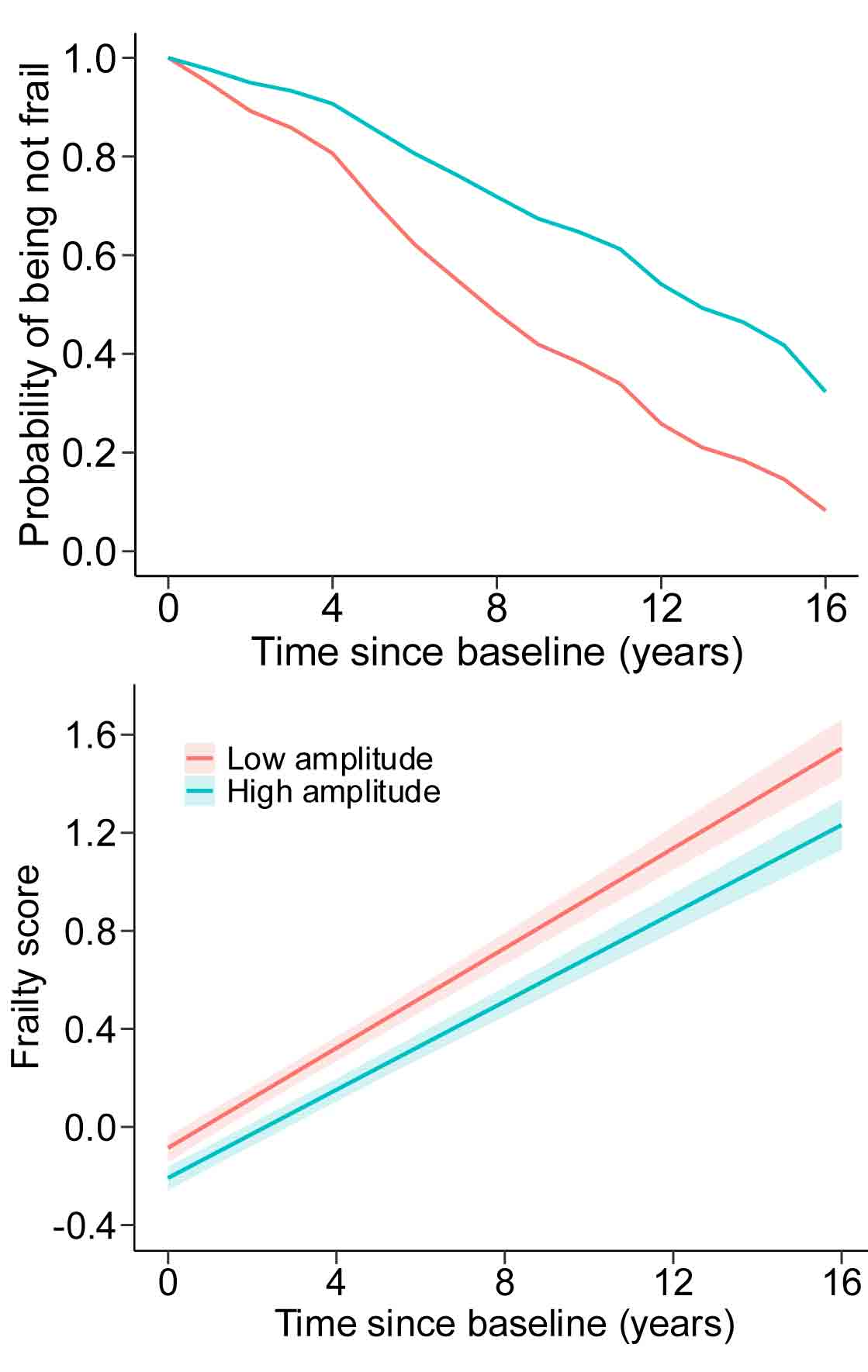
Frailty is characterized by diminished resilience to stressor events, and frail older people have increased risks for major health consequences. We found that lower strength, reduced stability, or increased variation of circadian rest-activity rhythms were associated with a higher risk of incident frailty and faster progress of frailty over time. Perturbed circadian rest-activity rhythms may be an early sign or risk factor for frailty in older adults.
R Cai, L Gao, C Gao, L Yu, X Zheng, DA Bennett, AS Buchman, K Hu, P Li
Nature Communications
Article | Open access | Article number: 7219 (2023), 16 November 2023
THE HARVARD GAZETTE | Smart trackers may predict health risks in older adults
YAHOO! NEWS | Wearable smart devices can help predict frailty-related conditions in older adults
NEWS MEDICAL | Circadian rest-activity patterns may signal frailty risk in older adults
MIRAGE | Wearable Tech Predicts Frailty Risk in Seniors via Circadian Data
Circadian Rest–Activity Rhythms, Delirium Risk, and Progression to Dementia
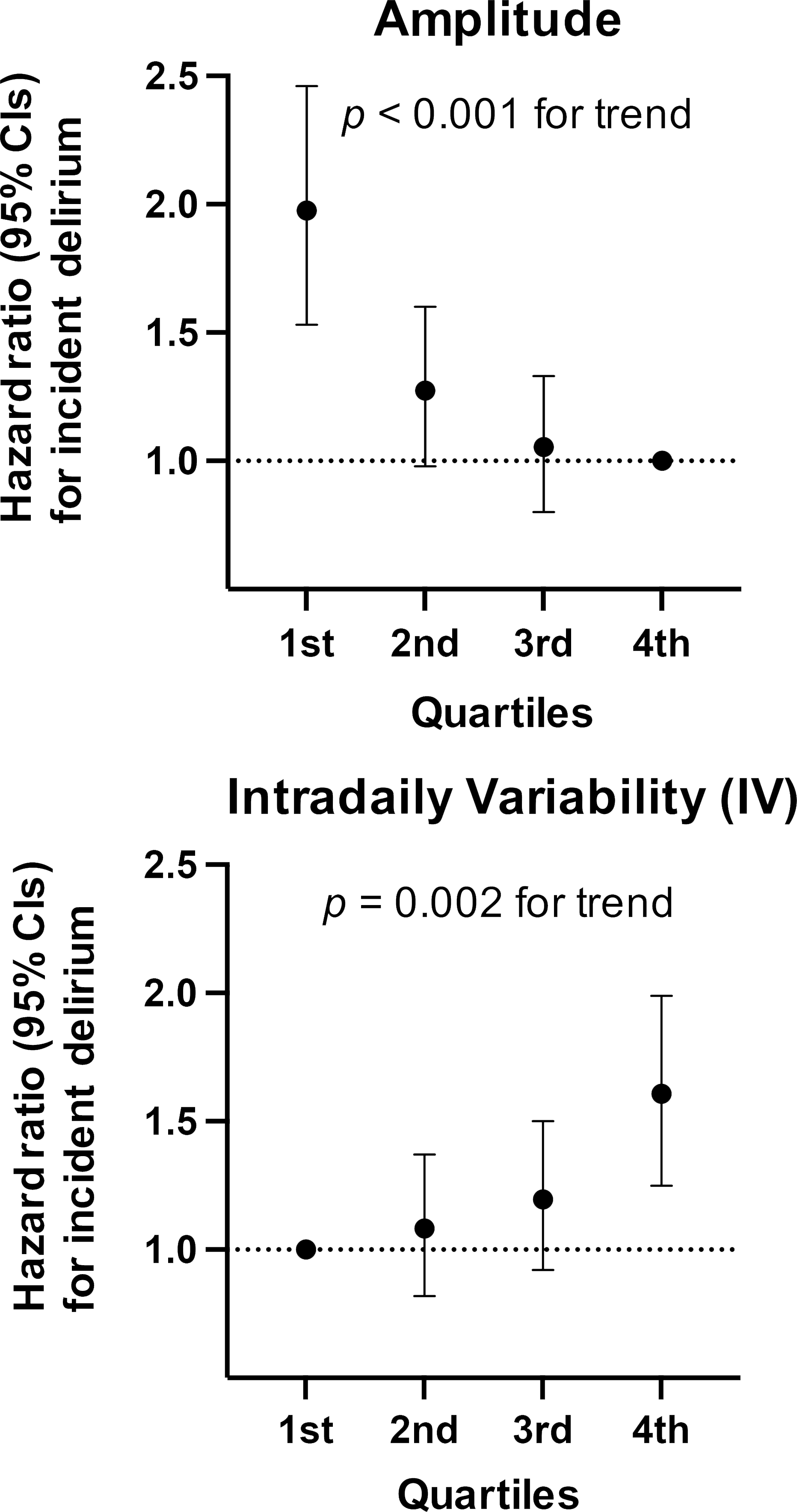
Delirium is a complex neurocognitive syndrome suspected to be bidirectionally linked to dementia. We found that 24-hour daily suppression in rest activity rhythms, fragmentated rhythms, and potentially delayed acrophase were associated with delirium risk. Subsequent progression to dementia was more likely in delirium cases with suppressed rhythms. The presence of disturbances in rest-activity rhythms before delirium and prior to progression to dementia suggests that these disturbances may predict higher risk and be involved in early disease pathogenesis.
L Gao*, P Li*, N Gaykova, X Zheng, C Gao, JM Lane, R Saxena, FAJL Scheer, MK Rutter, O Akeju, K Hu
Annals of Neurology
RESEARCH ARTICLE | Volume 93, Issue 6, Pages 1145-1157, June 2023
Heart rate response and recovery during exercise predict future delirium risk—A prospective cohort study in middle- to older-aged adults
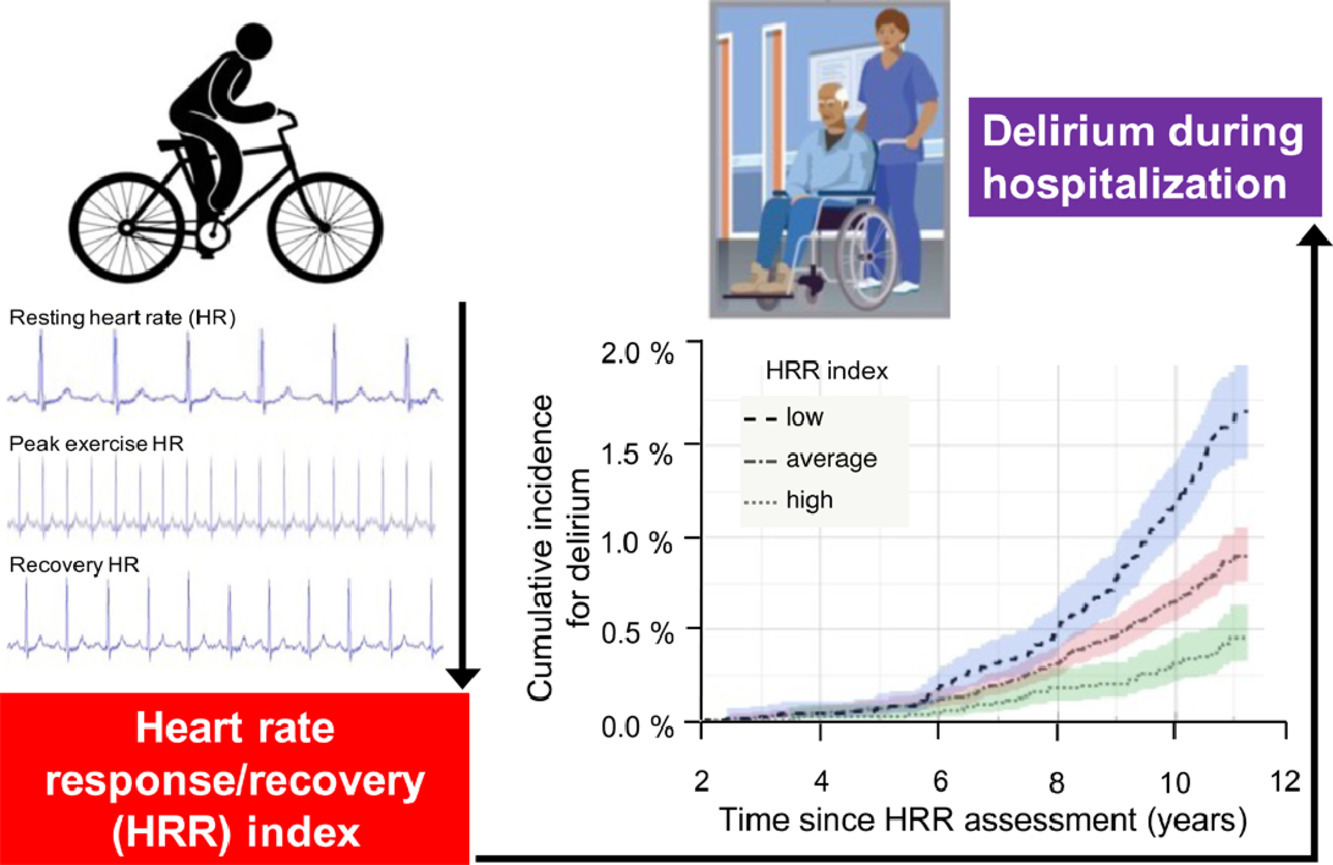
Heart rate response/recovery (HRR) to submaximal exercise predicted future delirium risk during hospitalization. Lowest quartile for a HRR index was equivalent to the risk of being 6 years older, a current smoker, or having 3 or more additional cardiovascular risks compared to those in the highest quartile. Given that HRR is potentially modifiable, our results demonstrate that it may be useful for neurological risk stratification alongside traditional cardiovascular risk factors.
L Gao, A Gaba, P Li, R Saxena, FAJL Scheer, O Akeju, MK Rutter, K Hu
Journal of Sport and Health Science
ORIGINAL ARTICLE | Volume 12, Issue 3, Pages 312-323, May 2023
Daytime napping and Alzheimer’s dementia: A potential bidirectional relationship
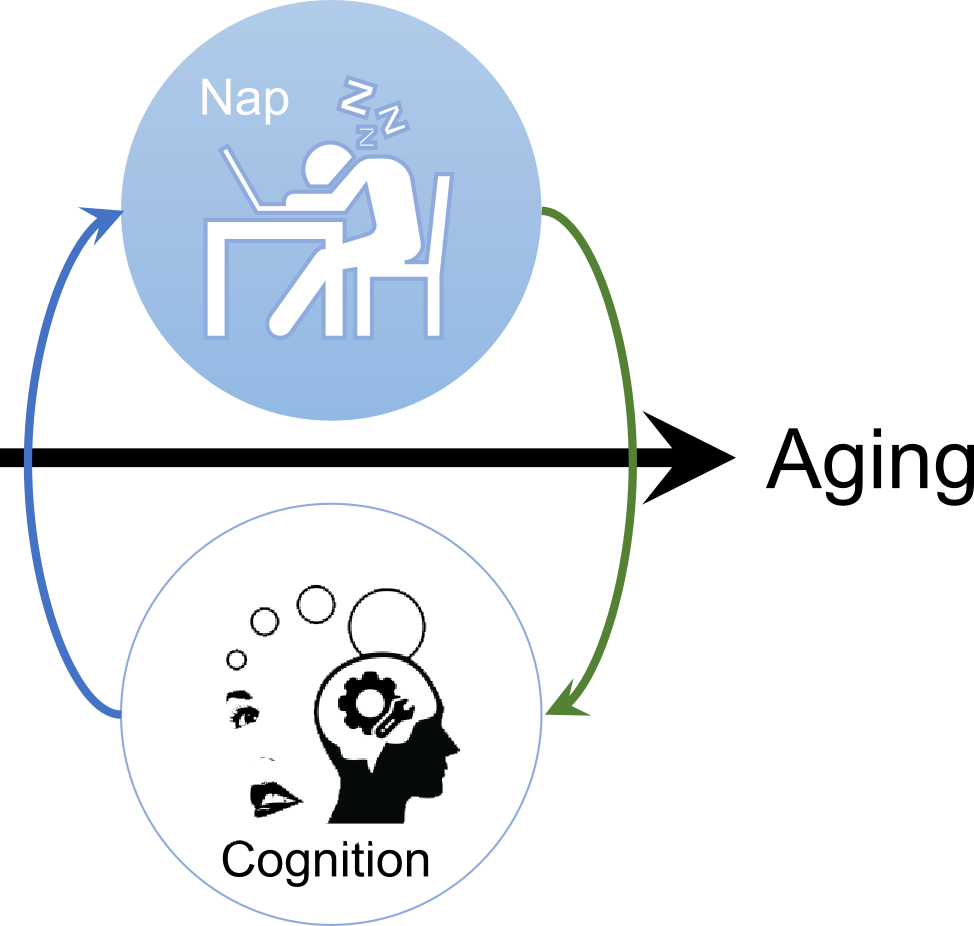
Daytime napping was assessed objectively through actigraphy annually for up to 14 years. Daytime napping was modeled longitudinally with aging and Alzheimer’s progression. Our findings suggested that progression of Alzheimer’s dementia accelerated the aging-related changes in daytime napping. Our results also for the first time demonstrated directly that daytime napping and cognitionmay drive each other’s changes bidirectionally.
P Li, L Gao, L Yu, X Zheng, MC Ulsa, HW Yang, A Gaba, K Yaffe, DA Bennett, AS Buchman, K Hu, Y Leng
Alzheimer's & Dementia: The Journal of the Alzheimer's Association
RESEARCH ARTICLE | Volume 19, Issue 1, Pages 158-168, January 2023
Circadian disturbances in Alzheimer's disease progression: a prospective observational cohort study of community-based older adults
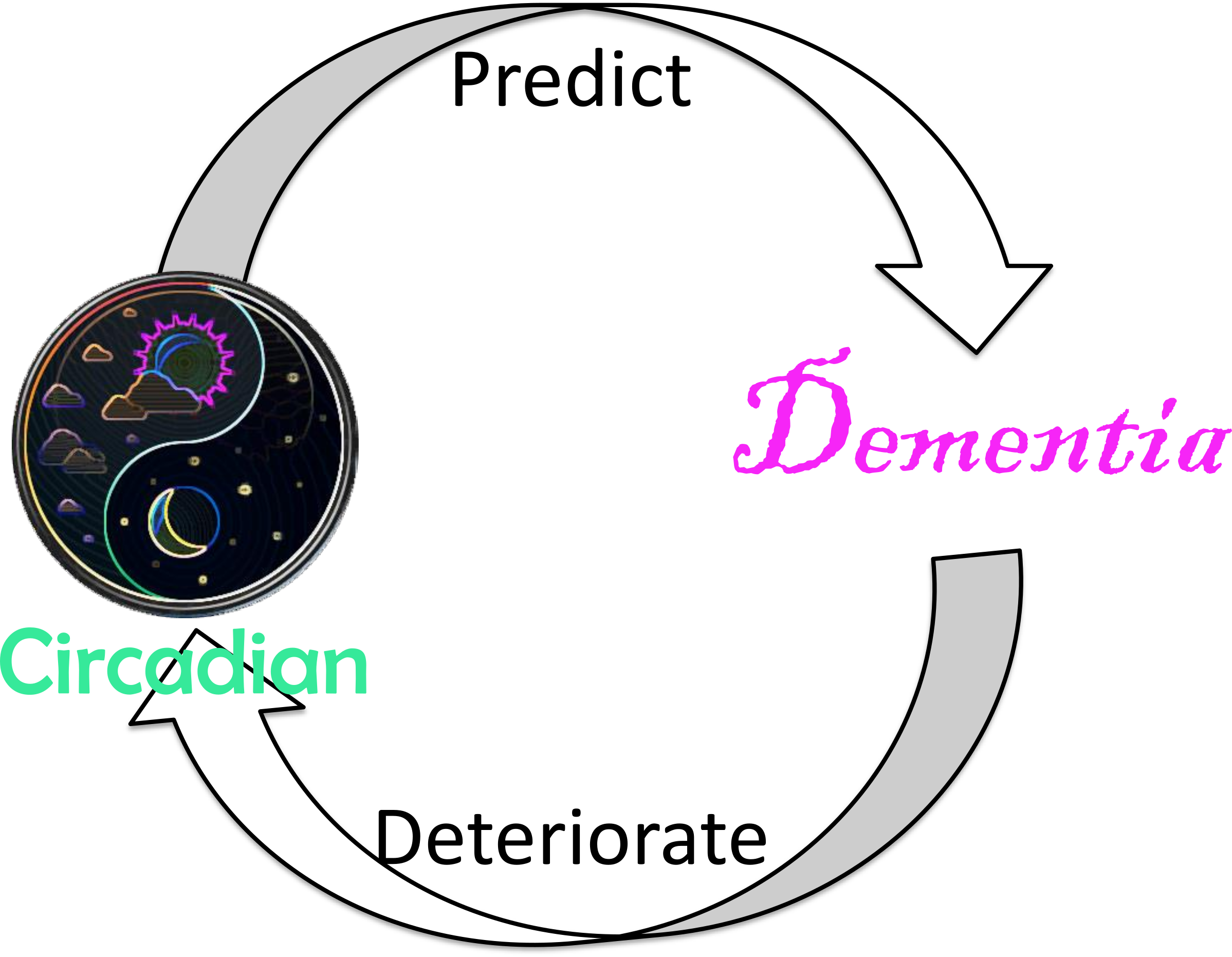
Our longitudinal study ascertained within-person changes in circadian rhythmicity of spontaneous motor activity in more than 1000 older adults that were accelerated by Alzheimer's progression. We also showed that lower strength and higher variability of circadian rest activity rhythms predicted a higher risk of developing Alzheimer's dementia in future. Our findings imply either a bidirectional relation or shared common underlying pathophysiological mechanisms between circadian dysregulation and Alzheimer's progression.
P Li, L Gao, A Gaba, L Yu, L Cui, W Fan, ASP Lim, DA Bennett, AS Buchman, K Hu
The Lancet Healthy Longevity